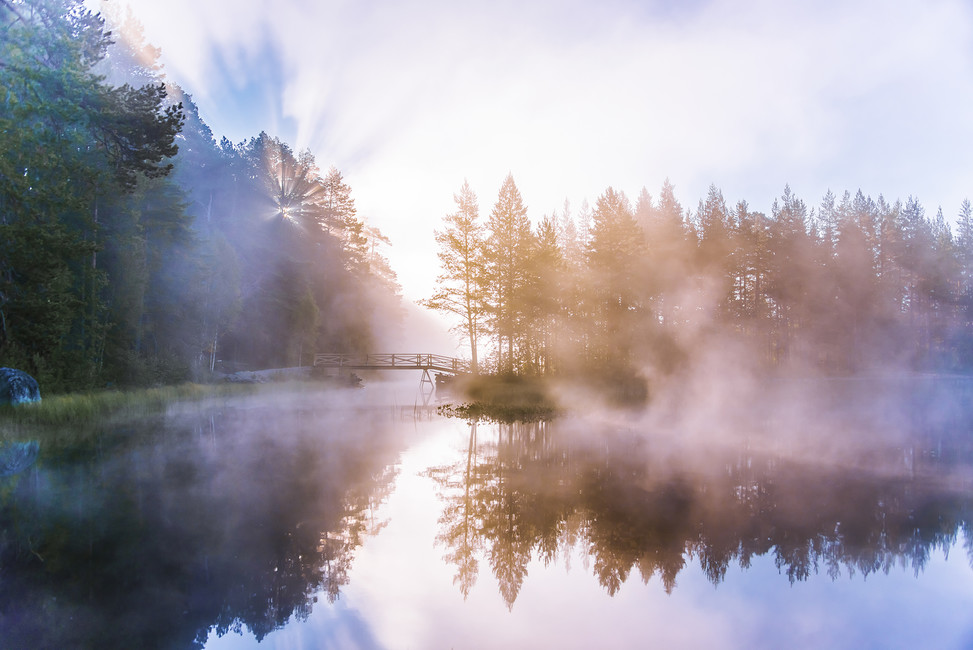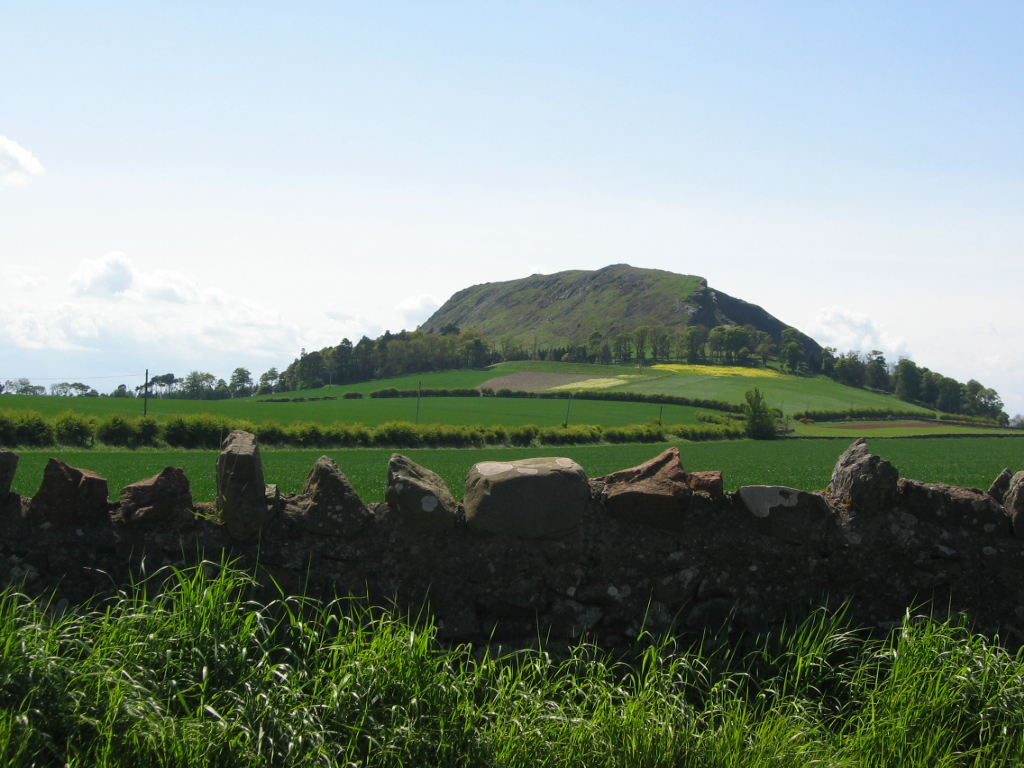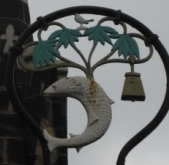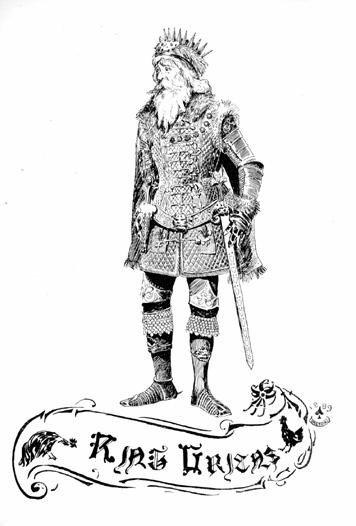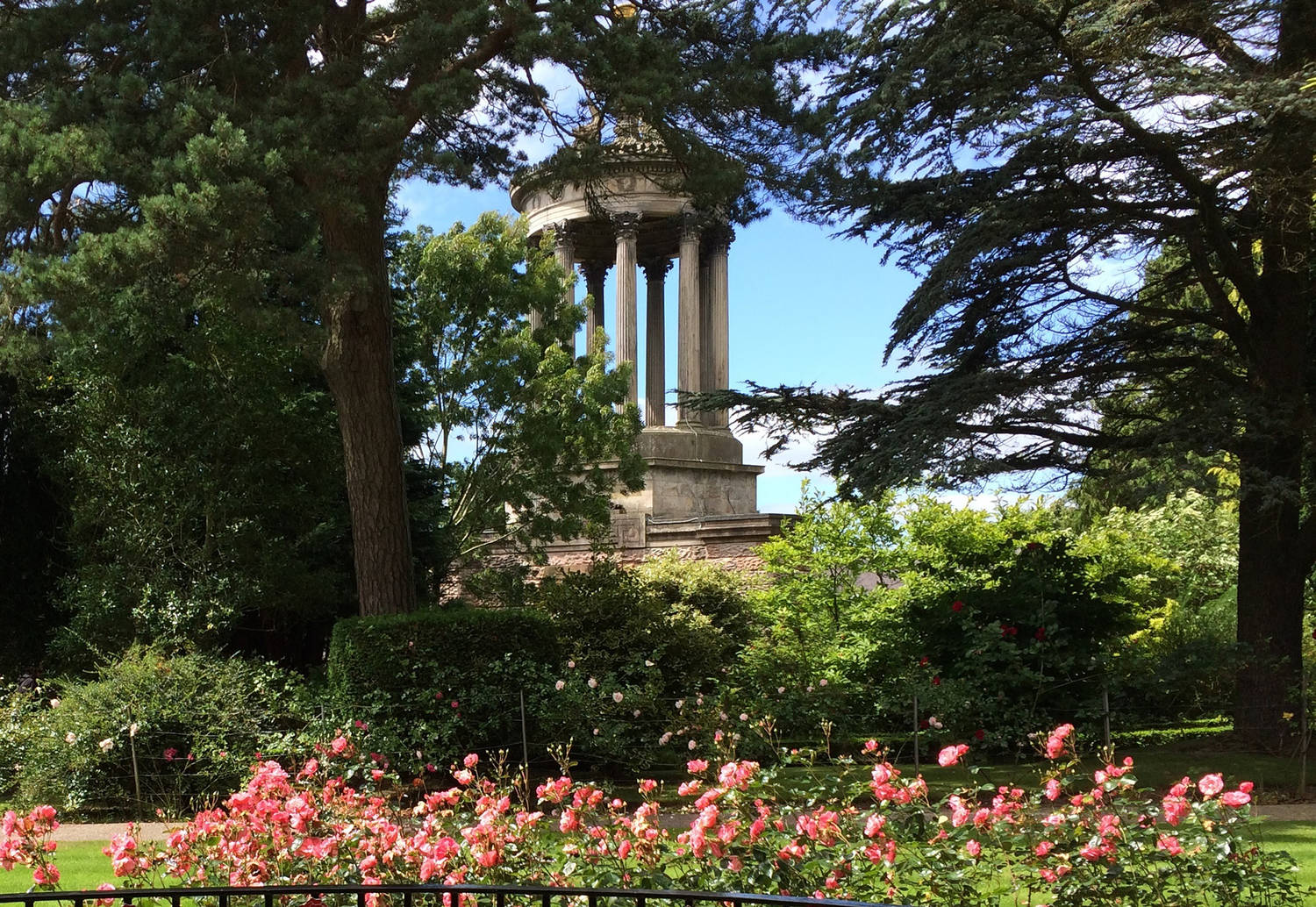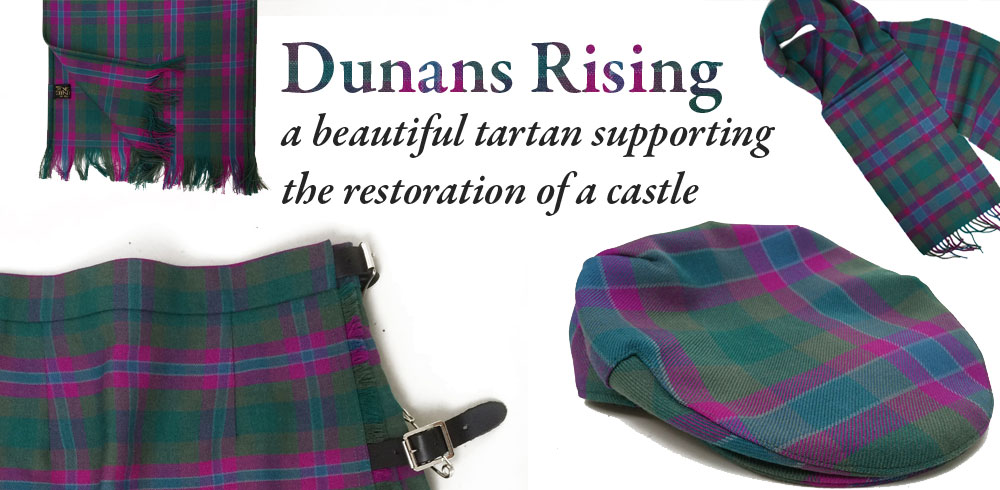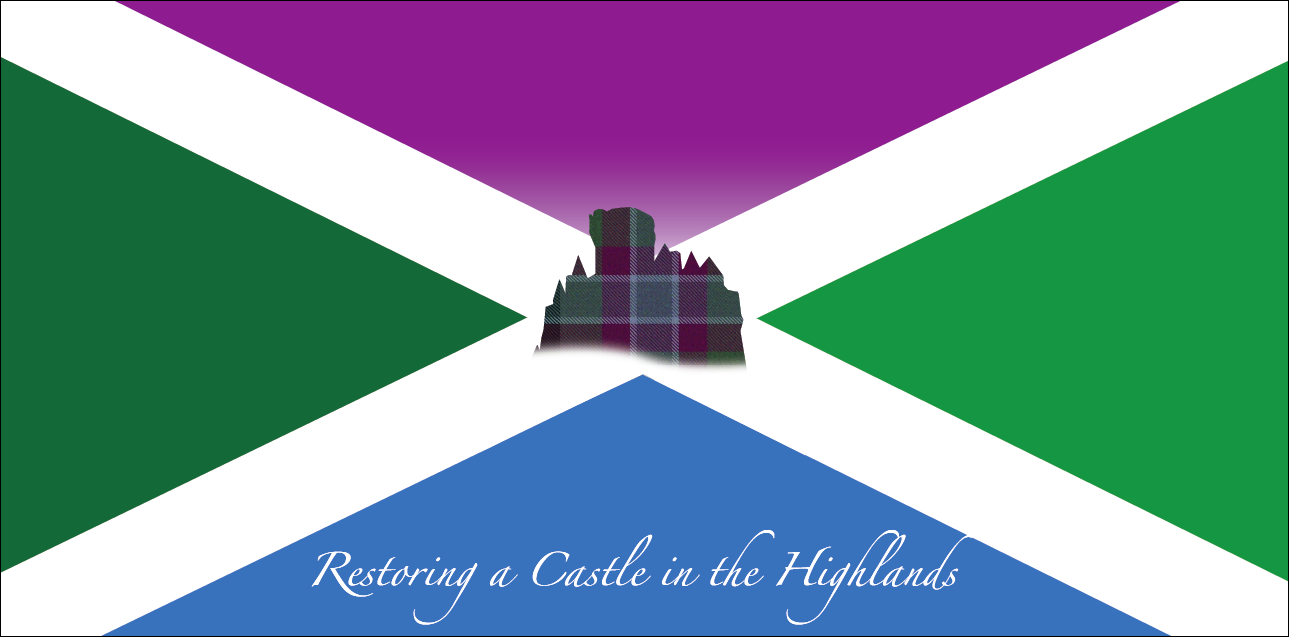Sarah Ann Loreth and Omalix
Princess
Theneva, later Saint Thenava (or, Denw, Tenew, Thanea or Enoch) lived from about 510 to about 570.
Teneu (or Thenew (Latin: Theneva),
Thaney, Thanea, Denw, etc.) is a legendary Christian saint who was venerated in medieval Glasgow, Scotland.
A medieval chapel to her once stood on the site of her grave at present-day St Enoch Square. At the ritual to Epona, I was told the well in the cathedral dedicated to Kentigern as Mungo may originally have been to Teneu. This is backed up the nearby street-name Lady Well Street.
Traditionally she was a sixth-century Brittonic princess of the ancient kingdom of Gododdin (in what became Lothian) and the mother of Saint Kentigern, apostle to the Britons of Strathclyde and founder of the city of Glas Ghu (Glasgow).
She and her son are regarded as the city's co-patrons, and Glasgow's St. Enoch Square allegedly marks the site of a medieval chapel dedicated to her, built on or near her grave ("St. Enoch" is in fact a corruption of "St. Teneu"). She is commemorated, annually, on 18 July.
In the first recorded hagiography of her son, her name is given as Thaney. The Vita Kentigerni ("Life of Saint Mungo").
In 1521, she appeared in John Mair's chronicle Historia Majoris Britanniae as Thametes, daughter of King Lot and sister of Gawain. Sometimes her name is given as Thameta or Thenelis.
Legend
Saint Teneu has been described as "Scotland's first recorded rape victim, battered woman and unmarried mother". Her son was conceived when the Welsh prince Owain mab Urien raped her. Owain was disguised as a woman, and after sexually assaulting the naïve princess, he confused her by saying: "Weep not, my sister, for I have not known thee as a man is used to know a virgin. Am I not a woman like thyself?" Upon discovering her pregnancy, her angry father King Lleuddun sentenced her to death and she was hurled from Traprain Law. Miraculously she survived the fall; when discovered alive at the foot of the cliff, Teneu was set adrift in a coracle and traveled across the Firth of Forth to Culross, where she was given shelter at the community of Saint Serf. There she gave birth to and raised her son Kentigern, whom Serf nicknamed Mungo, "very dear one".
Traprain Law: the cliff from which Teneu was thrown
The Gododdin-The Old North c. 550 – c. 650.
There are also Welsh legends about Teneu:
The cult which grew around St Thenew in Glasgow also developed in Wales where it was held that she had other sons by her marriage to the northern Prince Dingad, son of Nudd. The earliest surviving reference to her is in fact in the Life of St Winifred (c. 1140), in which Winifred, went to St Eleri for instruction. St Eleri put Winifred in the care of his mother "Theonia" whom Winifred eventually succeeded as abbess of Gwytherin (Clwyd). Kentigern was also a cult figure in Clwyd.
Her son, Kentigern (Welsh: Cyndeyrn Garthwys; Latin: Kentigernus), known as Mungo, was an apostle of the Scottish Kingdom of Strathclyde in the late 6th century, and the founder and patron saint of the city of Glasgow.
In Wales and England, this saint is known by his birth and baptismal name Kentigern (Welsh: Cyndeyrn). This name probably comes from the British *Cuno-tigernos, which is composed of the elements *cun, a hound, and *tigerno, a lord, prince, or king. The evidence is based on the Old Welsh record Conthigirn(i).
Particularly in Scotland, he is known by the pet name Mungo, possibly derived from the Cumbric equivalent of the Welsh: fy nghu 'my dear (one)'.
The Life of Saint Mungo was written by the monastic hagiographer Jocelyn of Furness in about 1185. Jocelin states that he rewrote the 'life' from an earlier Glasgow legend and an Old Irish document.
Mungo's mother Teneu was a princess, the daughter of King Lleuddun (Latin: Leudonus) who ruled a territory around what is now Lothian in Scotland, perhaps the kingdom of Gododdin in the Old North. She became pregnant after being raped by Owain mab Urien according to the British Library manuscript. Her furious father had her thrown from the heights of Traprain Law. Surviving, she was then abandoned in a coracle in which she drifted across the River Forth to Culross in Fife. There Mungo was born.
Mungo was brought up by Saint Serf who was ministering to the Picts in that area. It was Serf who gave him his popular pet-name.
In the Life of Saint Mungo, he performed four miracles in Glasgow. The following verse is used to remember Mungo's four miracles:
Here is the bird that never flew
Here is the tree that never grew
Here is the bell that never rang
Here is the fish that never swam
The verses refer to the following:
The Bird — Mungo restored life to a robin, that had been killed by some of his classmates.
The Tree — Mungo had been left in charge of a fire in Saint Serf's monastery. He fell asleep and the fire went out. Taking a hazel branch, he restarted the fire.
The Bell — the bell is thought to have been brought by Mungo from Rome. It was said to have been used in services and to mourn the deceased. The original bell no longer exists, and a replacement, created in the 1640s, is now on display in Glasgow.
The Fish — refers to the story about Queen Languoreth of Strathclyde who was suspected of infidelity by her husband. King Riderch demanded to see her ring, which he claimed she had given to her lover. In reality, the King had thrown it into the River Clyde. Faced with execution she appealed for help to Mungo, who ordered a messenger to catch a fish in the river. On opening the fish, the ring was miraculously found inside, which allowed the Queen to clear her name. (This story may be confused with an almost identical one concerning
King Maelgwn of Gwynedd and
Saint Asaph.)
Mungo's ancestry is recorded in the Bonedd y Saint. His father, Owain was a King of Rheged. His maternal grandfather, Lleuddun, was probably a King of the Gododdin; Lothian was named after him. There seems little reason to doubt that Mungo was one of the first evangelists of Strathclyde, under the patronage of King Rhiderch Hael, and probably became the first Bishop of Glasgow.
The Life of Saint Mungo bears similarities with
Chrétien de Troyes's French romance -
Yvain, the Knight of the Lion. In Chrétien's story, Yvain, a version of Owain mab Urien, courts and marries
Laudine, only to leave her for a period to go adventuring. This suggests that the works share a common source. It is a story of knight-errantry, in which the protagonist Yvain is first rejected by his lady for breaking a promise, and subsequently performs a number of heroic deeds in order to regain her favour.
Chrétien's source for the poem is unknown, but the story bears a number of similarities to the hagiographical Life of Saint Mungo (also known as Saint Kentigern), which claims Owain mab Urien as the father of the saint by Denw, daughter of Lot of Lothian. The Life was written by Jocelyn of Furness in ca. 1185, and is thus slightly younger than Chrétien's text, but not influenced by it. Jocelyn states that he rewrote the 'life' from an earlier Glasgow legend and an old Gaelic document, so that some elements of the story may originate in a British tradition. The name of the main character Yvain, at least, ultimately harks back to the name of the historical Owain mab Urien (fl. 6th century).
Owain mab Urien
Yvain had a huge impact on the literary world; German poet Hartmann von Aue used it as the basis for his masterpiece Ywein, and the author of Owain, or the Lady of the Fountain, one of the Welsh Romances included in the Mabinogion, recast the work back into its Welsh setting. The poem was also translated into a number of other languages, including the Middle English Ywain and Gawain; the Old Norwegian Chivaldric Ívens saga and the Old Swedish Herr Ivan.
The Valþjófsstaður door in Iceland, ca. 1200, depicts a version of the Yvain story with a carving of a knight slaying a dragon that threatens a lion. The lion is later shown wearing a rich collar and following the knight, and later still the lion appears to be lying on the grave of the knight.
Yvain dueling with a knight. Image courtesy of Princeton University Libraries
The first modern edition was published in 1887 by Wendelin Foerster.
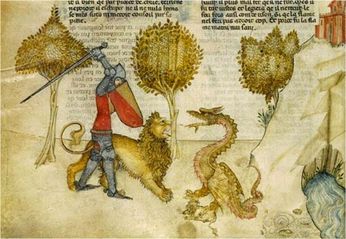
Yvain ou le Chevalier au lion
love and light,
Trace
xoxo

